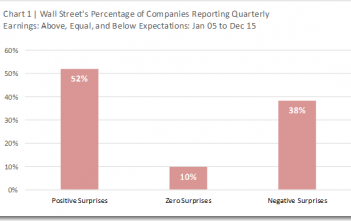Objective
This analysis illustrates the use of Dividend Yield (DivYld) and Dividend Growth (DivGro) measures to generate portfolios of approximately 50 stocks from the S&P900 universe. In keeping with this goal, we also reviewed the combination of the said factors with QRG’s LargeCap model to provide some insights on how the duo’s results could be enhanced by proprietary factors.
Screen for portfolio candidates
Starting with the S&P900 universe, we performed the following screens for each monthly period to ensure universe consistency over the entire analysis period – January 2000 to June 2014:
- Screen for stocks with DivYld using a trailing 4 quarters calculation, which produced about 600 securities
- Calculate 1 year and 2 year DivGro rates; Divide them into positive, negative, null growth universes
- Filter stocks with a positive 2 Year DivGro. The resulting list of 426 stocks, on average, that met these criteria is used as the investable universe.
Testing methodology
QRG’s alpha tester used the following rules to generate returns and risk statistics for DivYld, DivGro, QRG LargeCap models:
- Use individual factors’ score to sort each portfolio from most favorable to least favorable. For example, using dividend yield values, companies with high values are sorted to the top and those with low values are toward the bottom.
- Divide the portfolio universe into five equal ranked groups.
- Hold the most attractive securities, based on the factor’s rankings, in Quintile one (Q1) while Quintile five (Q5) contains the worst prospects.
- Equal weight the individual company returns within each quintile group.
- Compute each company’s monthly returns as price change plus dividend, assuming no reinvestment.
- The S&P 500 index performance is total returns with dividends reinvested and the Russell 1000 index is price returns.
The individual factor and multi-factor strategies outpaced the S&P500 and the Russell 1000 with portfolios of 55 to 85 stocks. Also, formulations that include QRG’s proprietary signal outperformed these benchmarks by much wider margins.Exhibit 1 displays total annualized returns for the strategies. The multi-factor formulations equal weight the respective signals. Results are based on buying Quintile one (Q1), which is the best ranked portfolio and rebalancing it monthly.
 The cumulative returns of Dividend Yield, Dividend Growth, and QRG’s LargeCap are superior to the Russell 1000. Specifically, Dividend Yield consistently beat Dividend Growth, except for 2000 and 2013 where they had similar results. The outpacing should come as little surprise since Dividend Yield is widely acknowledged as a mainstay of Low Volatility High Quality strategies because it provides a protective return cushion in turbulent markets.
The cumulative returns of Dividend Yield, Dividend Growth, and QRG’s LargeCap are superior to the Russell 1000. Specifically, Dividend Yield consistently beat Dividend Growth, except for 2000 and 2013 where they had similar results. The outpacing should come as little surprise since Dividend Yield is widely acknowledged as a mainstay of Low Volatility High Quality strategies because it provides a protective return cushion in turbulent markets.
The cumulative returns of Dividend Yield, Dividend Growth, and QRG’s LargeCap are superior to the Russell 1000. Specifically, Dividend Yield consistently beat Dividend Growth, except for 2000 and 2013 where they had similar results. The outpacing should come as little surprise since Dividend Yield is widely acknowledged as a mainstay of Low Volatility High Quality strategies because it provides a protective return cushion in turbulent markets. Moreover, it’s worth noting that combining Dividend Yield and Dividend Growth with QRG’s LargeCap signal bolstered the duo’s performance during the same period.
Moreover, it’s worth noting that combining Dividend Yield and Dividend Growth with QRG’s LargeCap signal bolstered the duo’s performance during the same period.
Dividend Yield and Dividend Growth results tend to deviate noticeably in turbulent markets. For example, the average monthly returns difference between these two factors during some of the recent market downturns range from 8 bps to 145 bps on an absolute basis. Dividend Yield consistently delivered higher returns. Moreover, QRG LargeCap performed as well as or better than DividendYield during crisis periods.
Conclusion
Using Dividend Yield and Dividend Growth as stock selection factors, it’s possible to create a portfolio of 50 to 85 holdings that outperforms the S&P500 and Russell 1000 using screened constituents of the S&P900 universe. Dividend Yield (12.73%) performed slightly better than Dividend Growth (12.21%), in tests from January 2000 to June 2014, while also providing a protective cushion during turbulent and crisis markets in that period.Equally weighted two factor model of Dividend Yield and Dividend Growth posted at least 100 basis points (13.87%) higher than each of the two individual factors’ annualized total returns.
Notwithstanding Dividend Yield and Dividend Growth’s robust performance as a two factor model, QRG’s LargeCap signal further augmented the duo’s result by 330 basis points (17.17% minus 13.87%) in a strategy that equal weight all three signals.

